ANDØYA AIR STATION, Norway – The Air Force Rapid Dragon Experimentation Program, led and developed by the Air Force Strategic Development Planning and Experimentation, or SDPE, office, part of the Air Force Research Laboratory’s Integrated Capabilities Directorate, in partnership with U.S. Special Operations Command Europe, or SOCEUR, successfully completed a live fire of a Joint Air-to-Surface Standoff Missile-Extended Range, JASSM-ER, long-range cruise missile on a Norwegian range Nov. 9, 2022.

An Airman with the 352d Special Operations Wing conducts preflight operations on an MC-130J Commando II during ATREUS 22-4 at Andøya Space Defense Range, Norway, Nov. 8, 2022. Two Air Force Special Operations Command wings partnered in a total force initiative to conduct the first live-fire demonstration in the European theater of Rapid Dragon, a long-range palletized effects system, in U.S. European Command region. (U.S. Air National Guard photo by Tech. Sgt. Brigette Waltermire)
The Rapid Dragon Palletized Effects System, capable of deploying long-range cruise missiles using standard airdrop procedures from a cargo aircraft, was successfully deployed from an MC-130J Commando II.
The operational MC-130J aircrew from the 352nd Special Operations Wing airdropped a Rapid Dragon deployment system containing long-range cruise missiles which were sequentially released on a range over the Norwegian Sea as part of U.S. European Command approved, U.S. Special Operations Command led Operational Series ATREUS.
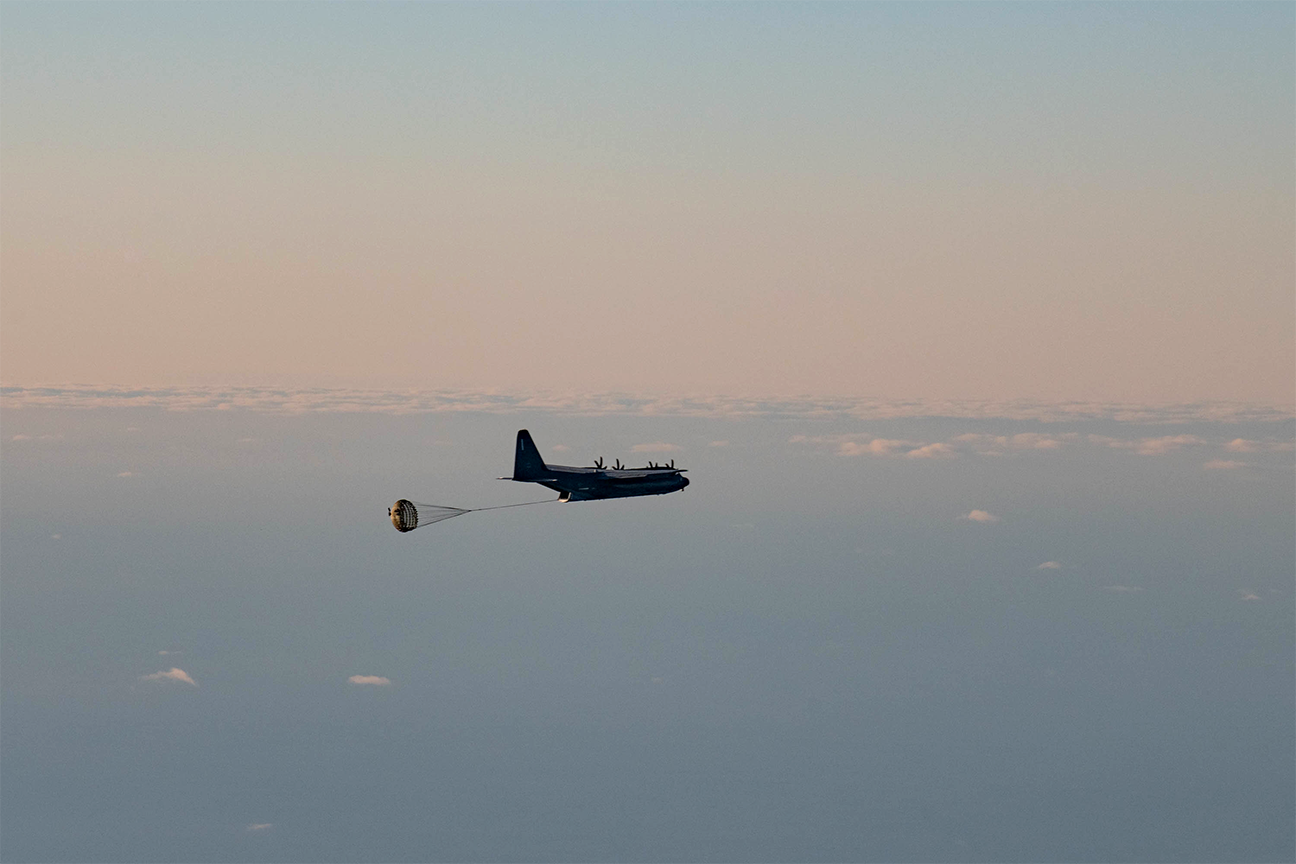
A palletized effects system falls from the cargo hold of a 352d Special Operations Wing MC-130J Commando II during a live-fire demonstration for ATREUS 22-4 at Andøya Space Defense Range, Norway, Nov. 9, 2022. This is the first time Rapid Dragon, a precision munitions capability for medium-sized or larger cargo aircraft that allows U.S. and NATO forces a flexible rapid response option, has been employed in the U.S. European Command theater. (U.S. Air National Guard photo by Tech. Sgt. Brigette Waltermire)
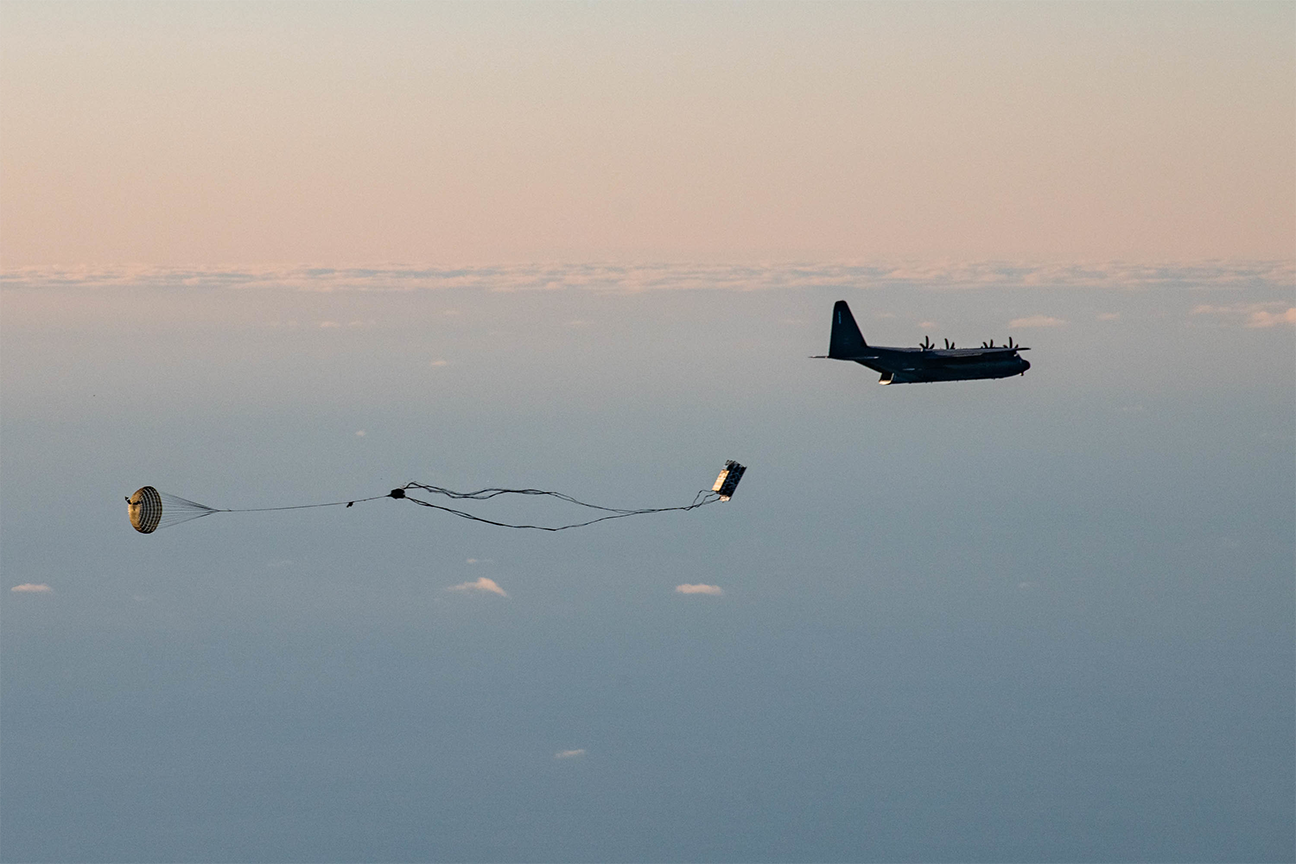
A palletized effects system falls from the cargo hold of a 352d Special Operations Wing MC-130J Commando II during a live-fire demonstration for ATREUS 22-4 at Andøya Space Defense Range, Norway, Nov. 9, 2022. This is the first time Rapid Dragon, a precision effects capability for medium-sized or larger cargo aircraft that allows U.S. and NATO forces a flexible rapid response option, has been employed in the U.S. European Command theater. (U.S. Air National Guard photo by Tech. Sgt. Brigette Waltermire)
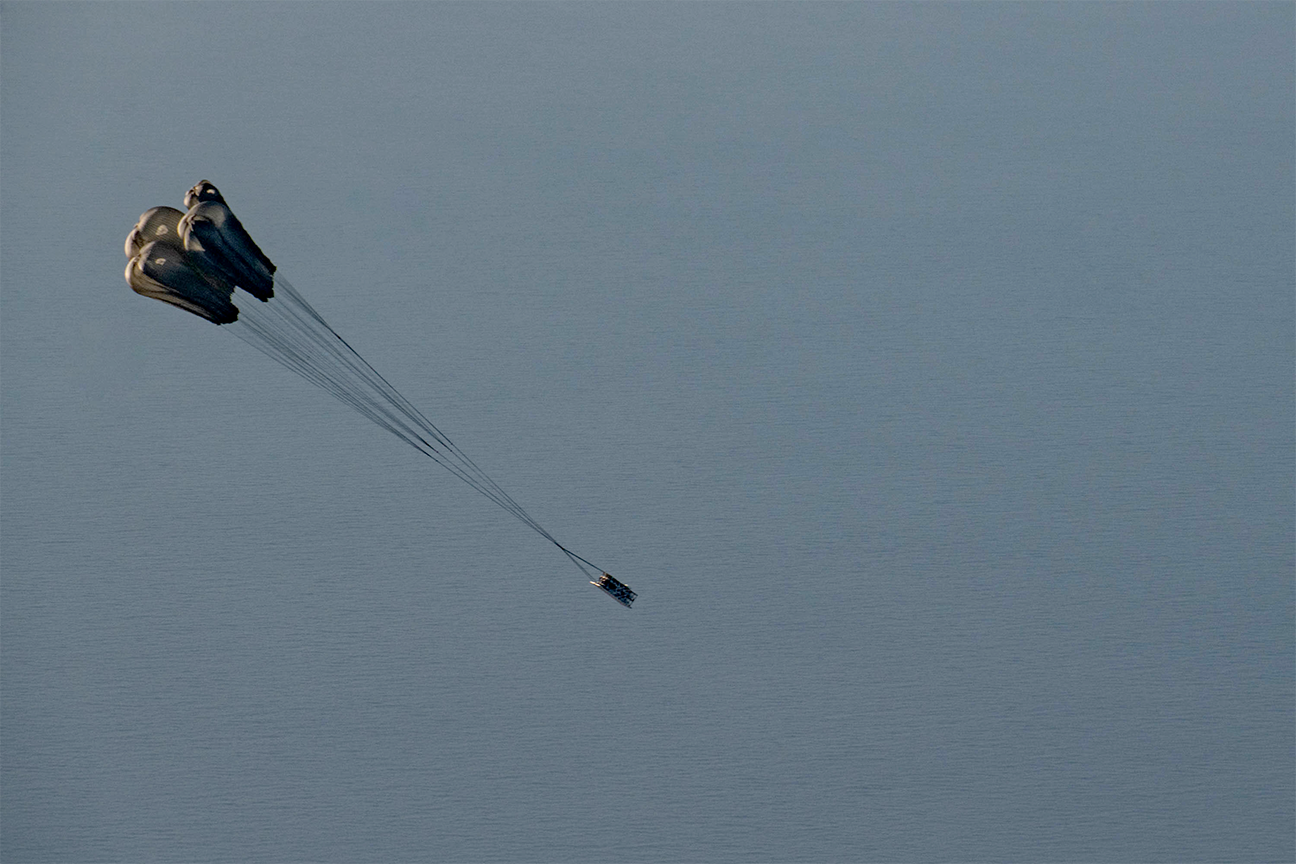
A palletized effects system falls from the cargo hold of a 352d Special Operations Wing MC-130J Commando II during a live-fire demonstration for ATREUS 22-4 at Andøya Space Defense Range, Norway, Nov. 9, 2022. This is the first time Rapid Dragon, a precision effects capability for medium-sized or larger cargo aircraft that allows U.S. and NATO forces a flexible rapid response option, has been employed in the U.S. European Command theater. (U.S. Air National Guard photo by Tech. Sgt. Brigette Waltermire)
“Now, more than ever we must take a different approach to accelerating capability to the warfighter,” said AFRL Commander Maj. Gen. Heather Pringle. “Rapid Dragon is a fantastic example of the speed at which technologists and warfighters can work — the design, development, prototyping and experimentation of new capabilities can get to the field on operationally relevant timelines.”
In addition to SDPE and SOCEUR, participants supporting this event included U.S. Special Operations Command (SOCOM) Det 1, Air Force Special Operations Command (AFSOC), the Naval Surface Warfare Center-Dahlgren; Lockheed Martin Missiles and Fire Control, Systima Technologies, ASR-Pioneer, and Andøya Space Center.
“The Rapid Dragon Experimentation Program is appropriately named, as it advanced rapidly from a concept on paper to a live fire using a developmental prototype in 24 months. Now less than three years from the program inception, Rapid Dragon is being used by SOCEUR in the Arctic Circle,” said Dr. Dean Evans, Rapid Dragon program manager. “This is a testament to the team’s focus on rapid fielding to meet warfighter needs.”
Although the Rapid Dragon Experimentation Program has been focused on kinetic munitions, the program’s efforts are now expanding from Palletized Munitions to Palletized Effects, which include kinetic and non-kinetic munitions; intelligence, surveillance, and reconnaissance, or ISR, platforms; cargo resupply; humanitarian aid delivery.
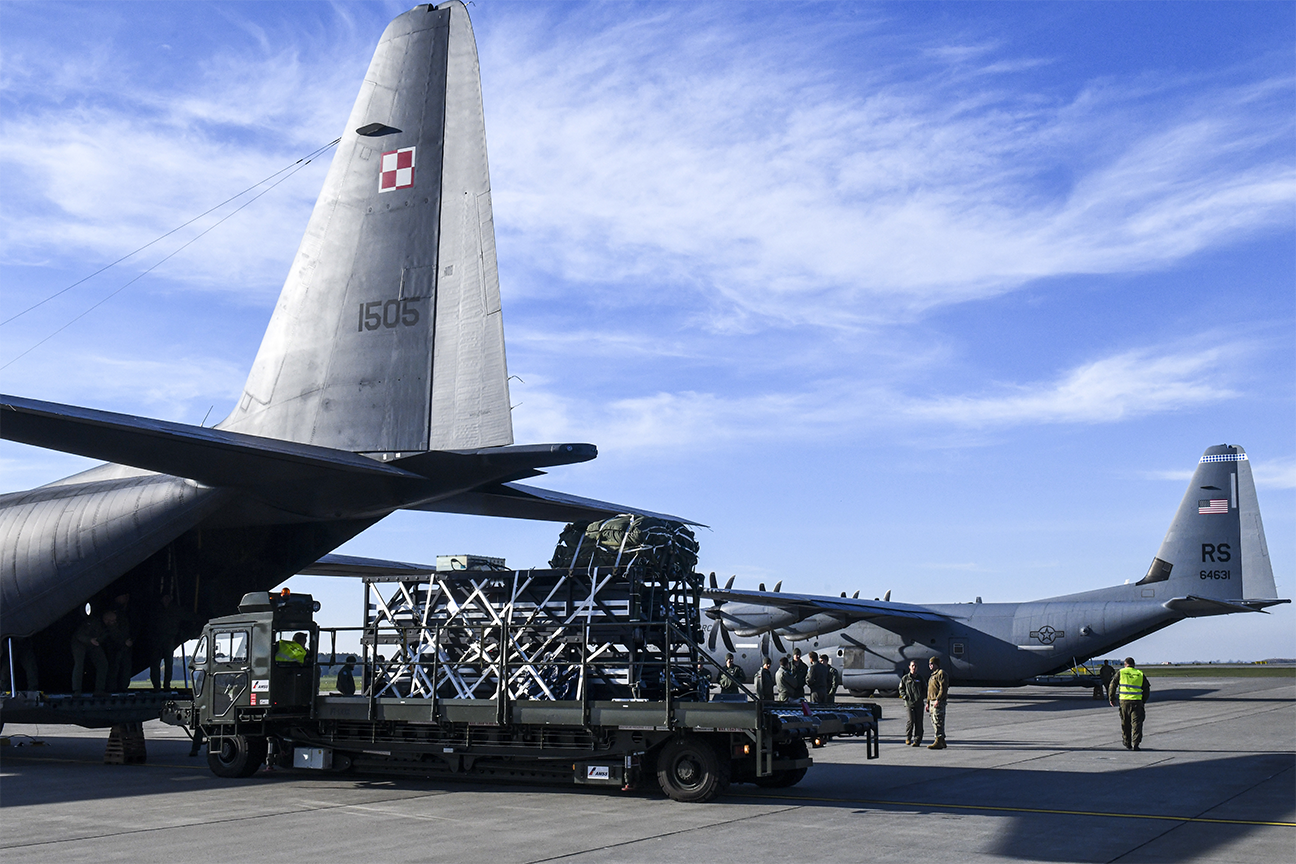
Members of the Polish Air Force, U.S. Air Forces in Europe-Air Force Africa (USAFE-AF), and U.S. Special Operations Command Europe (SOCEUR), conduct palletized precision effects cargo training onto a Polish Air Force C-130 Hercules, Nov. 8, 2022, in Powidz, Poland. The Rapid Dragon Palletized Effects System, capable of deploying long-range cruise missiles using standard airdrop procedures from a cargo aircraft, was successfully deployed from an MC-130J Commando II on a Norwegian range Nov. 9, 2022.
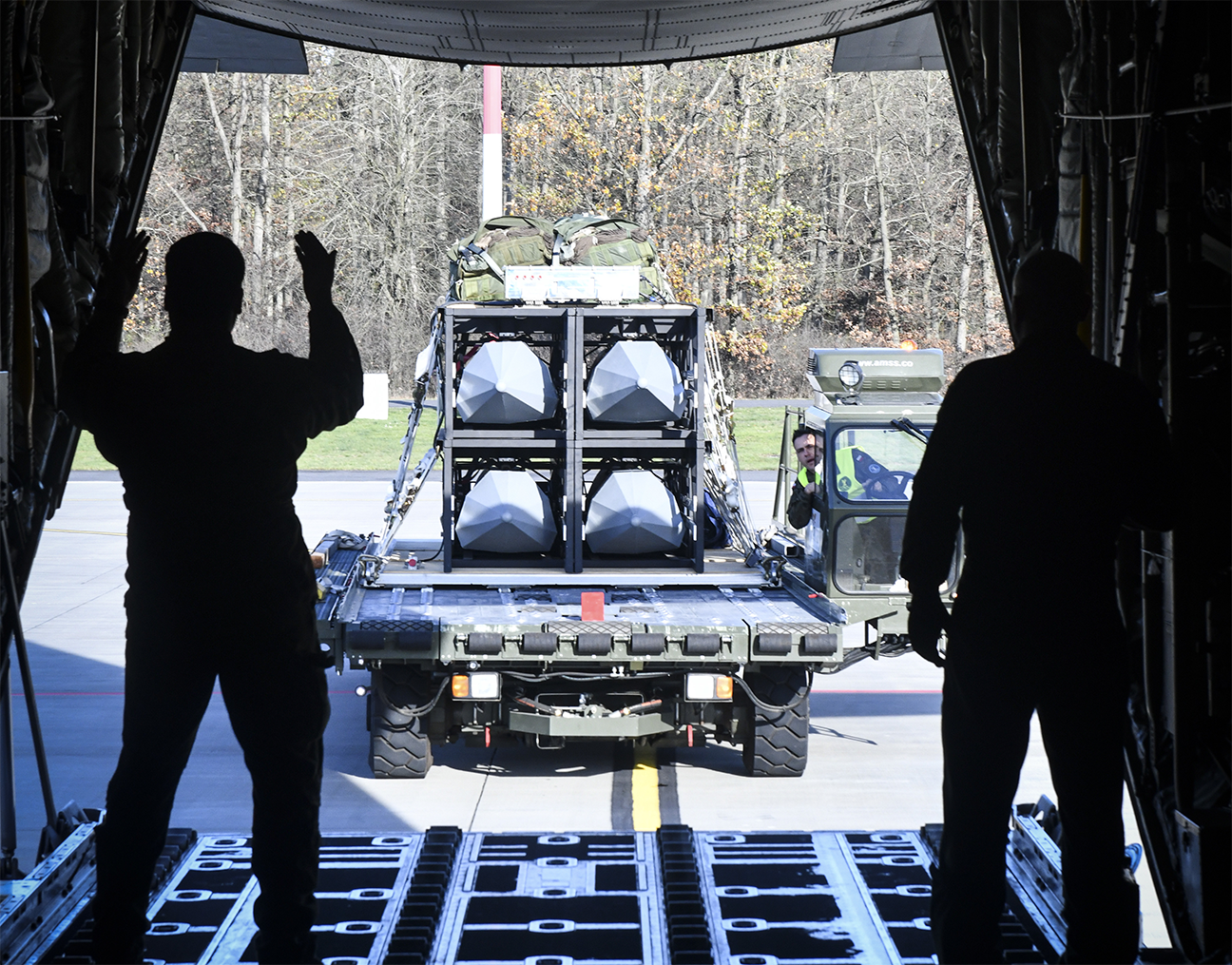
A Polish Air Force loadmaster, and personnel from U.S. Air Forces in Europe-Air Force Africa (USAFE-AF), and U.S. Special Operations Command Europe (SOCEUR), ground guide palletized precision effects cargo onto a Polish Air Force C-130 Hercules, Nov. 8, 2022, in Powidz, Poland. The Rapid Dragon Palletized Effects System, capable of deploying long-range cruise missiles using standard airdrop procedures from a cargo aircraft, was successfully deployed from an MC-130J Commando II on a Norwegian range Nov. 9, 2022.

A Polish Air Force loadmaster, and personnel from U.S. Air Forces in Europe- Air Force Africa (USAFE-AF), and U.S. Special Operations Command Europe (SOCEUR), help guide the palletized precision effects cargo onto a Polish Air Force C-130 Hercules, Nov. 8, 2022, in Powidz, Poland. The Rapid Dragon Palletized Effects System, capable of deploying long-range cruise missiles using standard airdrop procedures from a cargo aircraft, was successfully deployed from an MC-130J Commando II on a Norwegian range Nov. 9, 2022.
“AFSOC’s comparative advantage is and always has been our human capital,” said Lt. Gen. Jim Slife, AFSOC commander. “Palletized Effects is a fantastic example of what happens when we empower our Airmen to solve complex problems. AFSOC’s greatest value to the joint force as well as allies and partners is when we find unconventional ways to deliver airpower. The future is going to be different than what we have experienced for the last 20 years, but one thing I’m certain of is AFSOC will be ready for whatever the future operating environment brings.”
ATREUS began in April 2021 to identify and conduct training opportunities on capabilities found throughout the theater that enable response options to the U.S. and NATO allies and partners. Previous ATREUS training events have focused on the High Mobility Artillery Rocket System, or HIMARS, capability with participation from Romania, the United Kingdom, Sweden, and Latvia.
This is the seventh iteration of ATREUS in the European theater but the first combined and joint effort with participation from ally nations of Norway, Poland, Romania, and the United Kingdom as well as United States Air Force Europe-Air Forces Africa, United States Indo-Pacific Command, Air Force Special Operations Command, U.S. Special Operations Command Pacific, and U.S. Naval Sea Systems Command.
“Participation from our allies is cornerstone of ATREUS iterations. Poland, Romania, the United Kingdom have been regular participants in the most recent ATREUS iterations throughout 2021 and 2022, but the global effort with our fellow geographic combatant commands makes a historic demonstration of allied solidarity worldwide,” ATREUS Lead Lt. Col. Lawrence Melnicoff said.
About AFRL
The Air Force Research Laboratory, or AFRL, is the primary scientific research and development center for the Department of the Air Force. AFRL plays an integral role in leading the discovery, development, and integration of affordable warfighting technologies for our air, space, and cyberspace force. With a workforce of more than 11,500 across nine technology areas and 40 other operations across the globe, AFRL provides a diverse portfolio of science and technology ranging from fundamental to advanced research and technology development. For more information, visit: www.afresearchlab.com.

